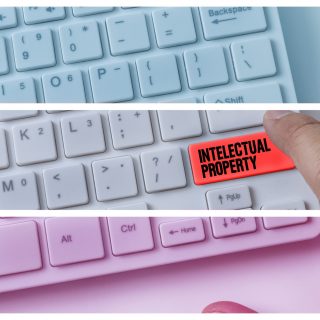Business Relations between Startups and Investors. How to Distribute Intellectual Property Rights
Startups, as companies running a business in high value-added sectors, with their high potential for rapid growth but without a sustainable business model, are forced to look for investors in one form or another. Most of the times, only after finding one or more investors, startups can start realizing their business ideas. Standard possibilities for investments are debt or equity financing. Debt is defined as something, usually money, owed by one party (the borrower or debtor) to a second party, while equity financing is the method of raising capital through the transaction of shares and is a more suitable alternative for starting startups with little to no resources. Any other form of financing is a subsystem or a combination of either of these two.
Unique ideas are the main driving force behind most of the startups, and for this reason, it is also the most valuable assets. This makes both equity and debt investors very concerned about the security of their investments by obtaining a protection interest in the intellectual property (IP) assets but in different kind of ways. By granting debt, investor most likely is going to use security measures where startups pledge their intellectual property. In comparison, equity financing investor is more concerned about proper security and quality of IP assets since he/she becomes a partial owner of it.
It is expected that a startup will have full possession of all IP that is critical to the development and progress of the business. Even if an enterprise is not registered yet, all IP must be held by an entrepreneur. An investor will make sure that the business he plans to invest in owns the IP for its technology or business idea. In addition to this, not all IP assets are equal, and the value of IP assets depends on a combination of legal, economic, and technical factors. For this reason, it is also advantageous to obtain an unbiased assessment of these assets from a professional who understands the nature of IP assets.
Collaborative activities that bring together the interests of investors, specialists of all kinds, young entrepreneurs, and other parties can often raise questions about who eventually ends up owning the intellectual property rights. Besides, there may also be experts who help startups with design, websites, programming, research, marketing materials or something else. Unless these people work under proper agreement, the startup company itself may not own the rights to the work of these people. Therefore, the first and foremost goal of a startup or entrepreneur is to determine on what intellectual property their business model is based on and identify who owns it.
Our recommendation is to avoid co-ownership where two or more parties have shared ownership and control of the same intellectual property rights, especially with patents or trademark registry. Co-ownership very seldom delivers the desired purpose and only increase the odds of potential conflicts. Additionally, each co-owner decision is required for practically any or all disposal of the intellectual property rights, and this complicates possibility to use IP and to defend it as well. Alternative options, where all intellectual property is registered in the name of a startup or shared between founders or investors, most of the time, are better options at protecting even the collective interest. By ensuring ownership and protection of IP assets, collaborative projects have higher chances to be more efficiently implemented, and litigation between partners avoided.
The ideal solution would be if a startup could understand and even register rights for its IP assets even before finding investments, so it would be more likely taken seriously by possible investors. The distribution of intellectual property at the starting point allows for proper IP assets allocation not only by finding investors but even upon the termination of the business relationship with them.
In summary, the goal of every startup is to protect and maintain its intellectual property base, which would allow it to continue operations. This achieved by registration of IP assets, entering into IP distributing arrangements and by well-designed confidentiality and non-disclosure arrangements. These tools will help to control IP privacy and protect the startup interest not only in theory but also in practice against any possible or actual investors, employees and/or partners.
The article is written by Paulius Milkevičius, Lawyer at METIDA Law Firm Zaboliene and Partners.





